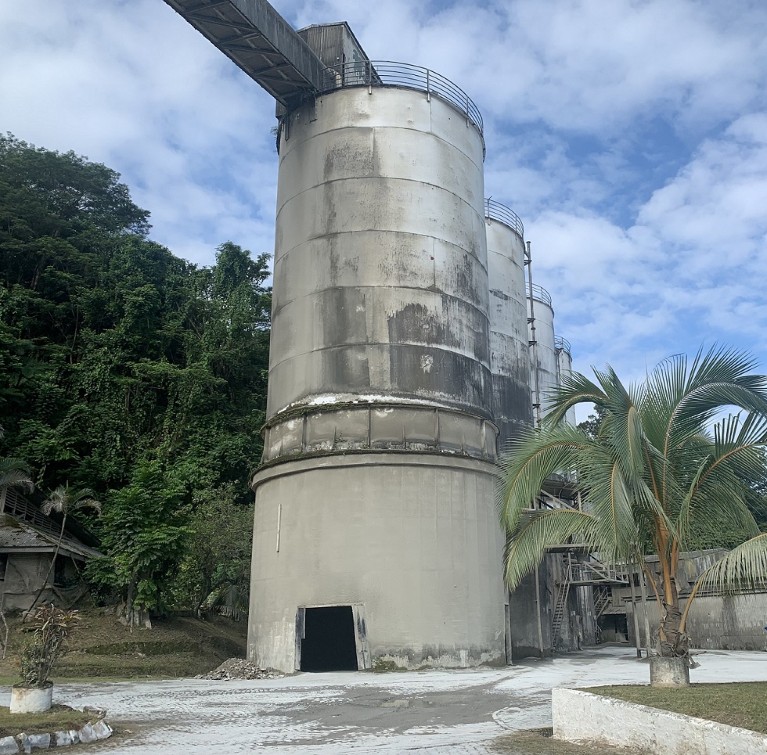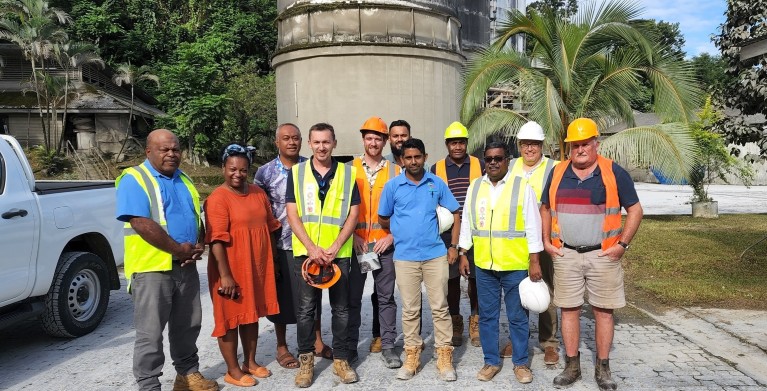Fiji is a hub for concrete production in the South Pacific, but it has been facing major challenges in recent years because of the environmental impact of production and sky-rocketing costs of importing the components. The archipelago is now looking to new techniques to manufacture low-carbon cement and seeking sustainable sources of sand to help reduce carbon-dioxide emission and the environmental costs of concrete manufacture.

A cement research facility in Fiji.
Blue Concrete Initiative is a collaboration between Fiji’s Ministry of Lands and Mineral Resources, The University of Queensland’s Sustainable Minerals Institute and other parties. The mandate is to identify and investigate the pathways needed to realize a reliable, economic and local supply of low-carbon concrete, not just for Fiji but for the broader Pacific region. Given low-carbon concrete generates around 40% less carbon dioxide than conventional concrete, Fiji could potentially reduce its national emissions by 4%.
Daniel Franks, programme leader for development minerals at the Sustainable Minerals Institute, has long been interested in concrete as a development mineral. “Concrete is so important to society and it is quite impactful on the environment as well,” he says.
The two components of concrete, the aggregate and binder, both have their own environmental challenges. Sand is the most common aggregate. In Fiji, most of the sand is extracted from river beds, which can be environmentally damaging, adversely affecting the lives and livelihoods of those who live around them.
Quarries currently meet a smaller proportion of Fiji’s sand needs. One focus of the Blue Concrete Initiative is to identify how to sustainably increase the supply of quarried sand. While quarries can cause local environmental disturbance, their overall area is much smaller than for mining of river sand, and they are also easier to rehabilitate. The initiative is analysing existing supplies and identifying new or bigger sustainable sources.
Another approach could be to extract sand as a by-product of metal mining, which has the added benefit of reducing mining waste. “We’re working on different ways to add mineral-processing circuits to metal mining, which would extract a pure ore-sand by-product,” Franks says.

Daniel Franks (fourth from the left) and colleagues in the Pacific.
The binder — cement — is traditionally a product called ordinary Portland cement, which is made by heating limestone and other ingredients to extremely high temperatures to make the base material called clinker; a chemical process that generates enormous amounts of carbon dioxide. Fiji currently imports all of its clinker, but pays one of the highest rates in the world for it, partly because of the costs of transporting such large volumes.
One way to reduce the carbon-dioxide emission of concrete production is to reduce the amount of clinker used by substituting locally sourced raw limestone and clays to produce what is called limestone calcined clay cement, or LC3. “We estimate that introducing LC3 to Fiji for its cement production, could reduce the country’s emissions by 4%,” Franks says. Fiji could also manufacture its own clinker using local limestone deposits.
Another key focus of the Blue Concrete Initiative — which also includes the Technology and Action for Rural Advancement, the Pacific Community, the ACP-EU Development Minerals Programme implemented by the United Nations Development Programme, and the Indian Institute of Technology Delhi — is detailed mapping and sampling of potential local sources of these materials.
The goal of the initiative is to show that developing its own low-carbon concrete manufacturing capability is not only feasible for Fiji, but economically viable. “Not only will they be able to provide cheaper cement, but it’ll be low-emission cement, so Fiji will be supporting its neighbours in mitigating climate change,” Franks says.



 Collection: Nature Index Innovation
Collection: Nature Index Innovation
 Pooling risk to insure against natural disaster
Pooling risk to insure against natural disaster
 Could microbes make barren ore waste productive?
Could microbes make barren ore waste productive?
 Directing resources where reefs need them
Directing resources where reefs need them
 Molecular clamp vaccines: lessons from a setback
Molecular clamp vaccines: lessons from a setback
 Superbugs: Finding the path of least resistance
Superbugs: Finding the path of least resistance
 Switching off chronic inflammation
Switching off chronic inflammation
 Reprogramming autoimmune diseases
Reprogramming autoimmune diseases
 Solar-driven industry: powering the future
Solar-driven industry: powering the future
 Spider venom shows potential as treatment for epilepsy, stroke and pain
Spider venom shows potential as treatment for epilepsy, stroke and pain
 Sorghum research heats up
Sorghum research heats up